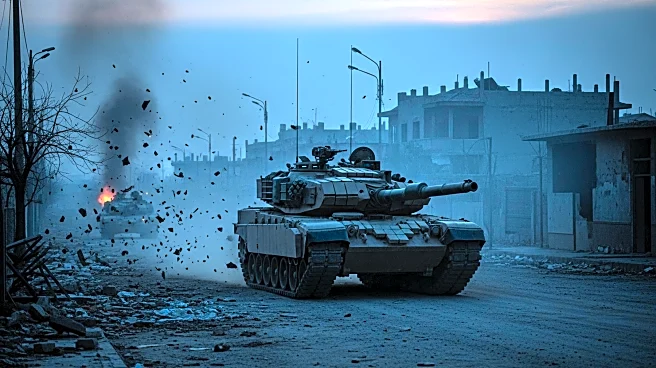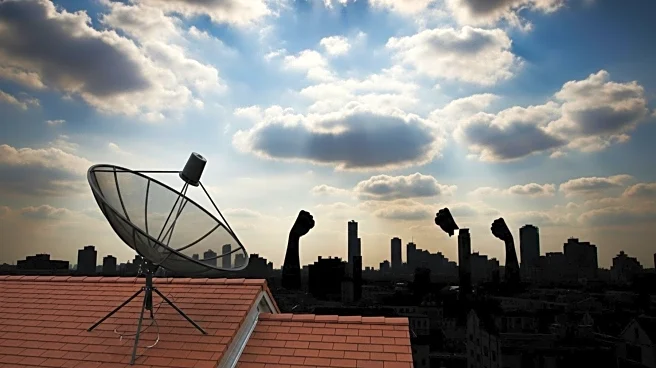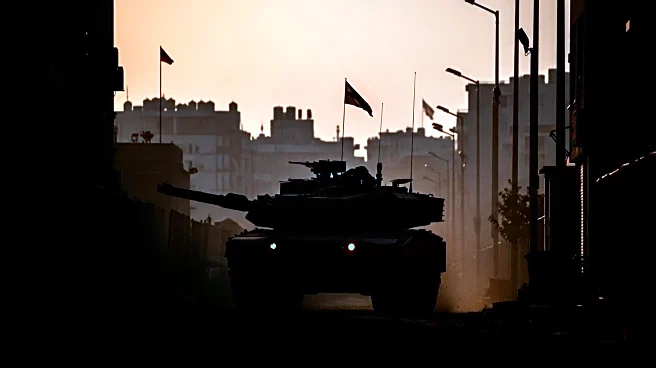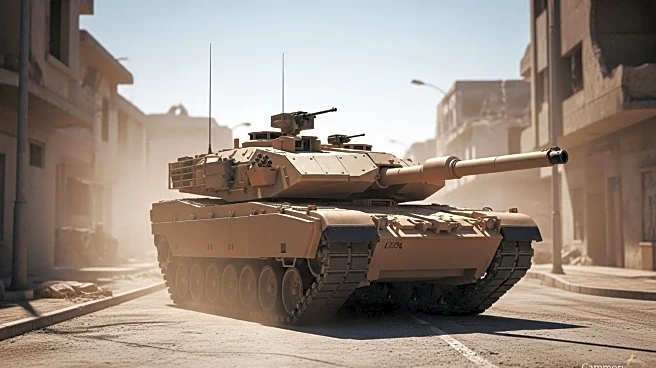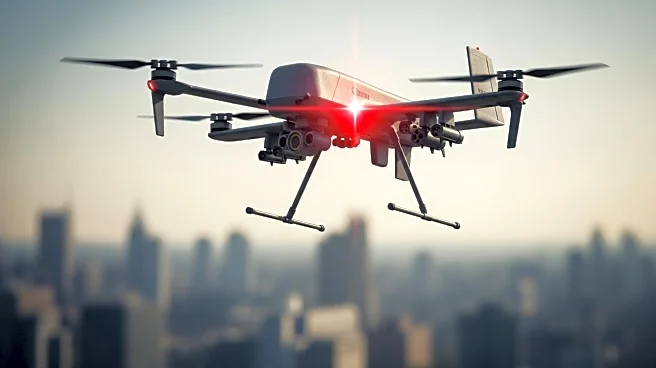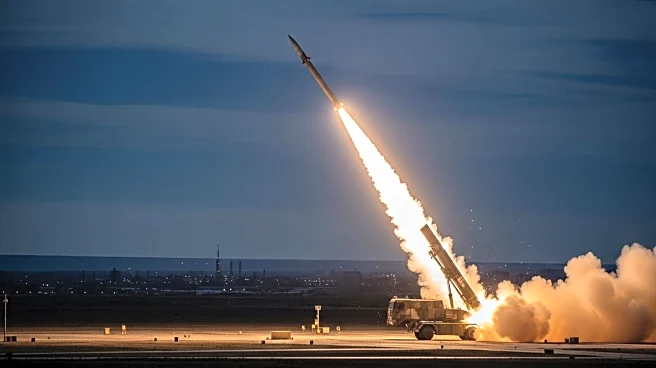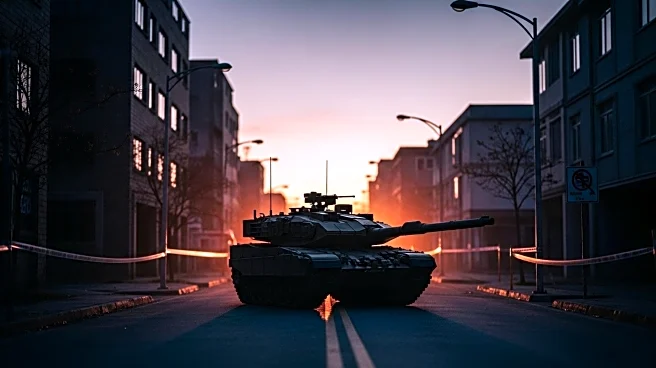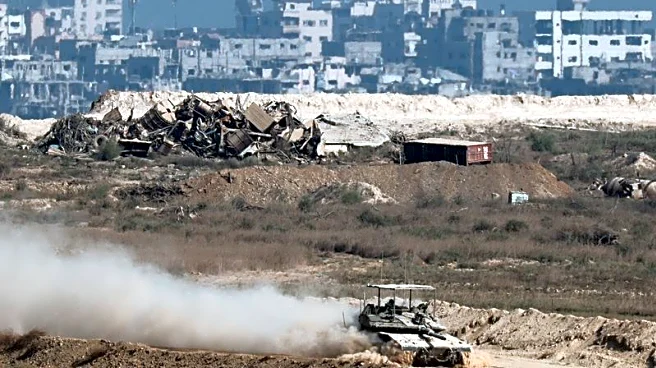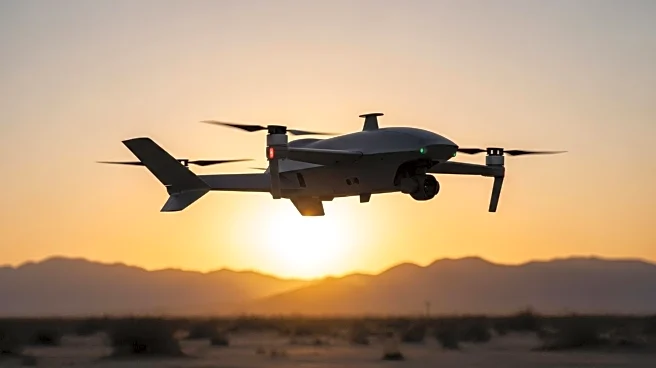What is the story about?
What's Happening?
Israeli Defense Forces (IDF) are advancing deeper into Gaza City as part of Operation Gideon’s Chariots II, a strategic military campaign aimed at dismantling Hamas' military strongholds. The operation, which began two weeks ago, involves a slow and methodical approach prioritizing troop safety over speed. The IDF is employing a combination of airstrikes, ambushes, and engineering work to flatten buildings and establish logistics hubs. The campaign is directed by Chief of Staff Lt. Gen. Eyal Zamir, who oversees daily movements of brigade combat teams. The IDF's strategy includes ambushing Hamas fighters and preventing potential propaganda victories for Hamas. The operation is supported by heavy artillery and air force strikes, with over 200 airstrikes conducted close to Israeli ground forces. The IDF is also reinforcing positions with defensive earthworks and logistical hubs to sustain a long campaign, aiming to prevent Hamas from rebuilding tunnel networks.
Why It's Important?
The IDF's operation in Gaza City is significant as it represents a critical phase in the ongoing conflict between Israel and Hamas. The methodical approach aims to minimize Israeli casualties while systematically dismantling Hamas' military infrastructure. This operation could impact the broader geopolitical landscape, influencing negotiations and humanitarian efforts in the region. The IDF's focus on engineering and logistics reflects lessons learned from previous operations, aiming to deny Hamas the ability to reconstruct its tunnel networks. The campaign's success or failure could affect Israel's political leadership and its approach to future conflicts. Additionally, the operation's impact on civilian populations and infrastructure in Gaza raises humanitarian concerns, potentially affecting international relations and aid efforts.
What's Next?
As the IDF continues its advance, a decisive stage of the campaign is expected when forces move on Hamas' central strongholds in Gaza City. The operation's progress may lead to further political and military decisions, including potential hostage negotiations. The IDF's strategy includes reinforcing supply routes and building fortified posts, indicating a prolonged presence in the region. The military's actions could provoke reactions from Hamas, potentially leading to escalated conflict or attempts to capture Israeli soldiers. The situation remains fluid, with ongoing clashes and political pressures influencing the operation's trajectory.
Beyond the Headlines
The operation in Gaza City highlights the complex ethical and humanitarian dimensions of military campaigns in densely populated areas. The IDF's strategy of flattening buildings to prevent tunnel reconstruction raises questions about the long-term impact on civilian infrastructure and the potential displacement of residents. The use of loudspeakers to broadcast political messages underscores the intersection of military operations and political influence, with implications for domestic and international perceptions of the conflict. The situation in Gaza also reflects broader regional tensions, with potential spillover effects in the West Bank and implications for Israel's relations with neighboring countries.
AI Generated Content
Do you find this article useful?
